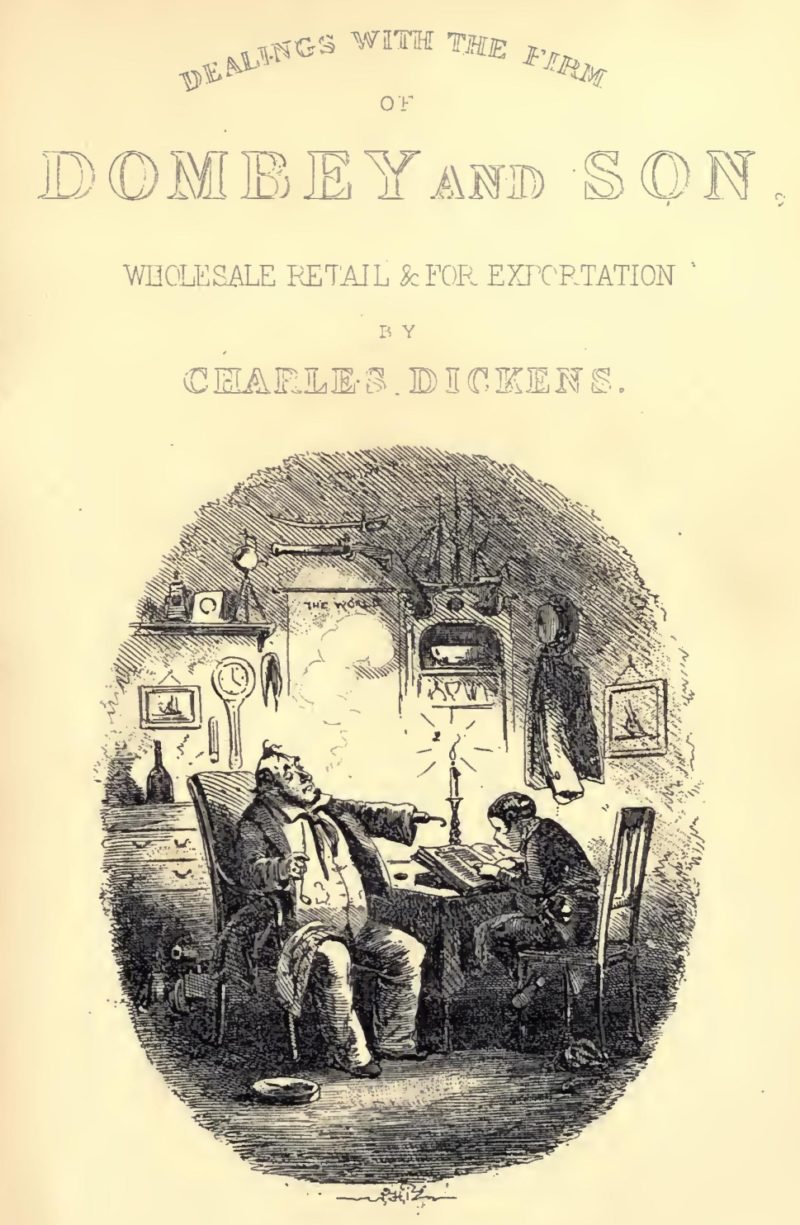I have a suggestion: Forget London. Forget, for now, the nineteenth century, forget the whole assertion that the value of the “late” or “mature,” Dickens—a construction whose first evidence is usually located by commentators here, in Dombey and Son—rests on his placement of his sentimental melodramas and grotesques in an increasingly deliberate and nuanced social portrait of his times, of his city. Forget institutions, forget reform. Please indulge me, and forget for the moment any questions of psycho-biographical excavation, of self-portraiture, despite Dombey’s being the book which preceded that great dam-bursting of the autobiographical impulse, David Copperfield (and, in fact, Dombey contains a tiny leak in that dam in the form of Mrs. Pipchin, the first character avowed by Dickens to have been drawn from a figure from his life). Forget Where’s Charles Dickens in all this fabulous contradictory stew of story and rhetoric? What does the guy want from us? What does he really think and believe? Forget it all, and then forgive what will surely seem a diminishing suggestion from me, which is that you abandon all context, ye who enter here, and read Dombey and Son as though it were a book about animals.
Yes, animals. Read it as though the characters are all covered in fur, beginning with Dombey and his little newborn heir on the glorious first page: Read this book as if it were The Wind in the Willows, or Watership Down (oh, I’m going to be strung up for this), one of those wonderful droll stories about anthropomorphized creatures, clever eccentric badgers and rabbits and crows, as well as feral predators, foxes and cats, tucked into Victorian suits and dresses—read it as if Dickens were the greatest animal novelist of all time. If this seems impossible, note the head start Dickens has given you in naming Dombey’s characters: Cuttle, Chick, Nipper, Gills, MacStinger and, of course, the Game Chicken. Note the descriptions: “Mrs. Pipchin hovered behind the victim, with her sable plumage and her hooked beak, like a bird of ill-omen.” There’s Mrs. Skewton, “whose vigilance… no lynx could have surpassed.” Doctor Blimber “looked at Paul as if he were a little mouse”—then, a page later, “seemed to survey Paul with the sort of interest that might attach to some choice little animal he was going to stuff.” Mrs. Brown is shown “hovering about” Florence Dombey “like some new kind of butterfly.” Or consider the description of Mr. Toodle feeding his brood of children, which omits any overt animal reference yet nonetheless evokes a Nature Channel clip:
...
You have reached your article limit
Sign up for a digital subscription and continue reading all new issues, plus our entire archives, for just $1.50/month.
Already a subscriber? Sign in





